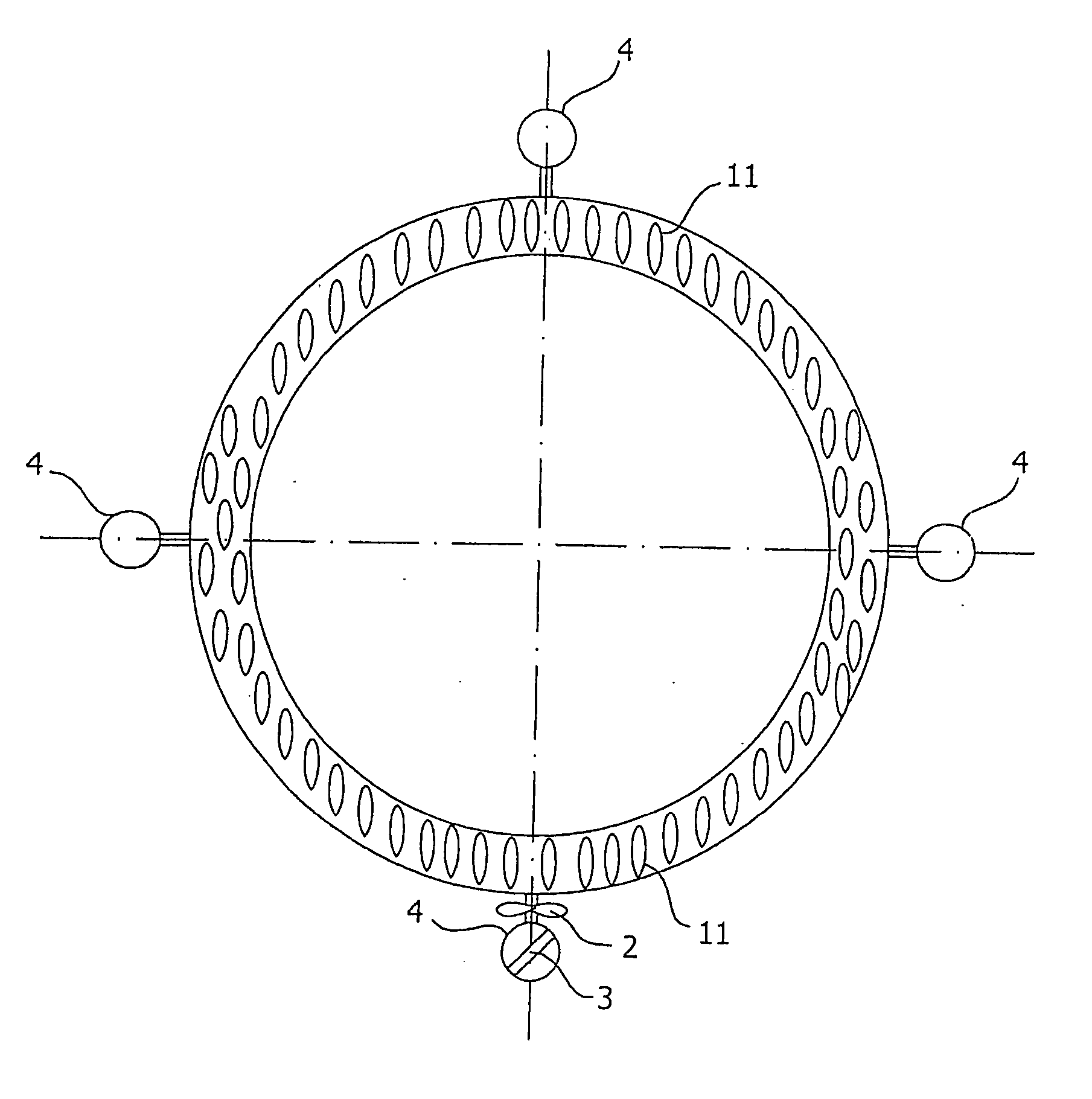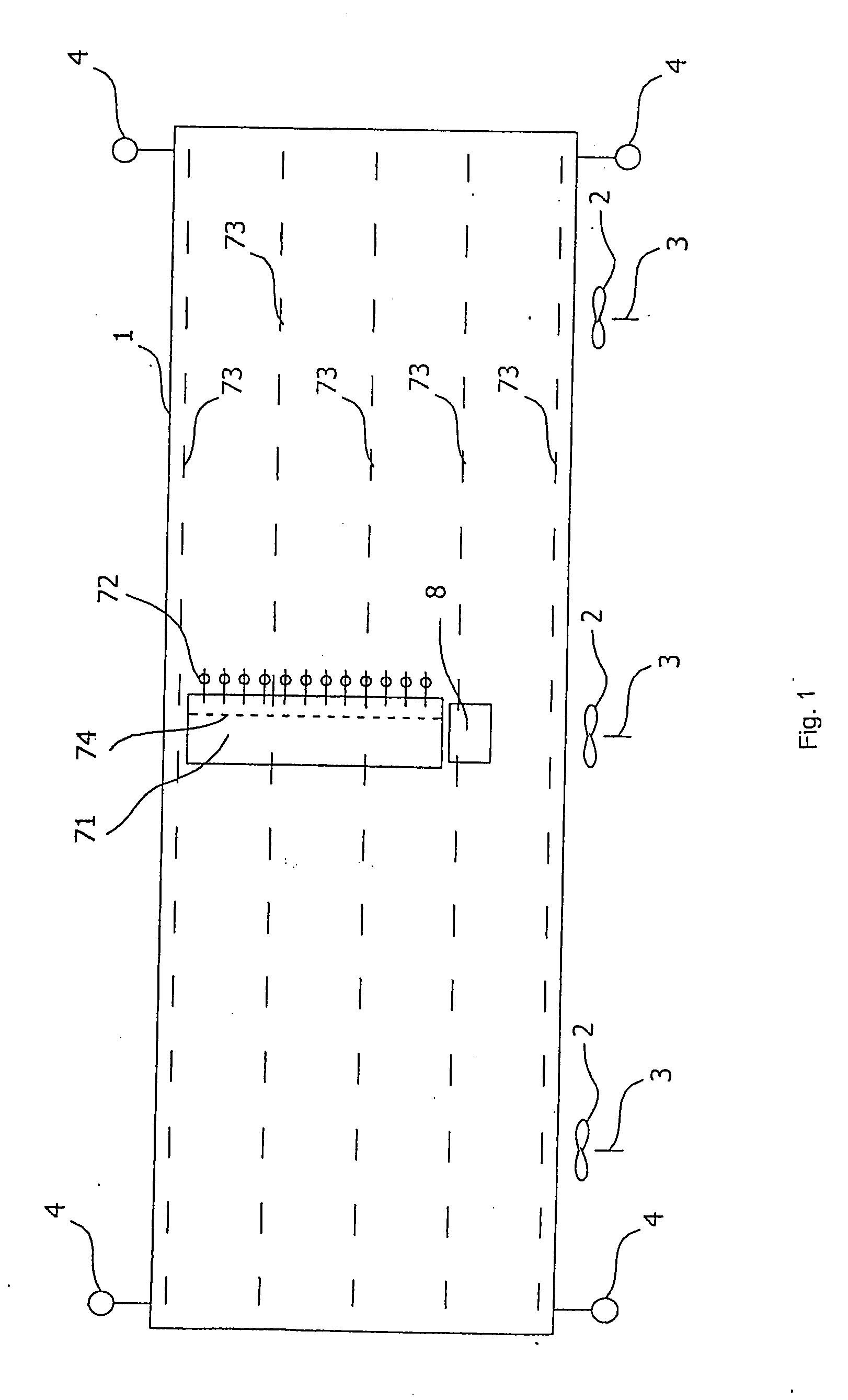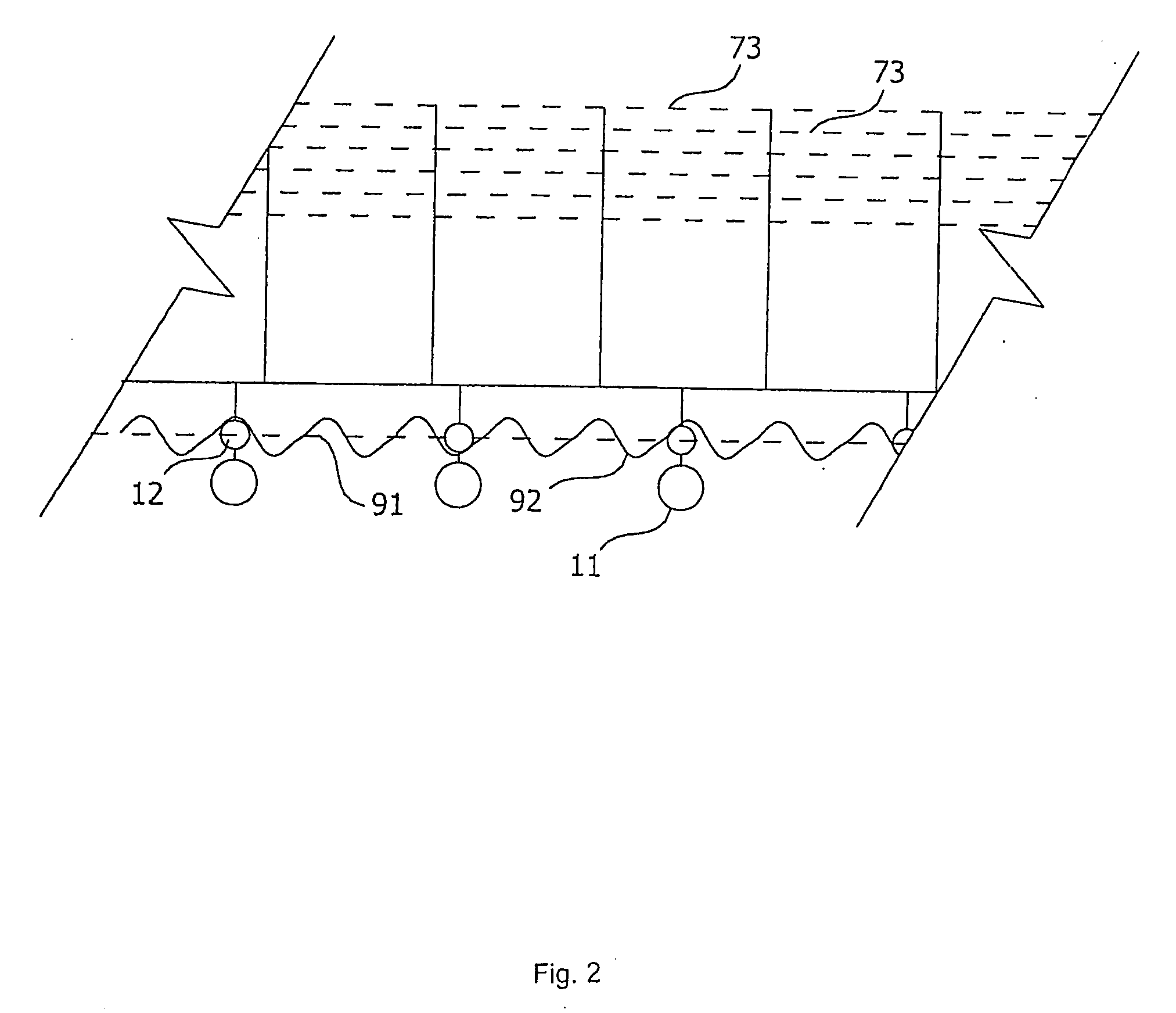Method of and a device for the reduction of tropical cyclones destructive force
a technology of destructive force and tropical cyclones, applied in the direction of wind motor control, non-positive displacement fluid engine, liquid fuel engine components, etc., can solve the problems of affecting the efficiency of use, and causing great material damag
- Summary
- Abstract
- Description
- Claims
- Application Information
AI Technical Summary
Benefits of technology
Problems solved by technology
Method used
Image
Examples
example 2
[0083] In the top view the device shown in the FIGS. 3, 4 and 5 is of a circular shape and comprises the following: [0084] a floating support structure 1 with floats 11, 12, - - - [0085] a circular structure 5 with wind blades 51, [0086] a propulsion 2, [0087] a rudder 3, [0088] monitoring platforms 4[0089] suction means 71, pumping means 72, dispersion means 73 and water cleaning means 74.
[0090] In this case said floating support structure 1 with the floats 11, 12 is 30 m wide and the diameter of the circle is 400 m. There are circular guiding rails fitted to the top of the support structure.
[0091] Analogically to Example 1, the device is fitted with support floats 11 and auxiliary floats 12.
[0092] The circular structure 5 is pivotally attached to the support structure 1. It is fitted with wheels 6 moving on the rail tracks fastened to the support structure 1, with the circular structure allowed to conduct only the pivotal movement and securely anchored in all the other directio...
PUM
 Login to View More
Login to View More Abstract
Description
Claims
Application Information
 Login to View More
Login to View More - R&D
- Intellectual Property
- Life Sciences
- Materials
- Tech Scout
- Unparalleled Data Quality
- Higher Quality Content
- 60% Fewer Hallucinations
Browse by: Latest US Patents, China's latest patents, Technical Efficacy Thesaurus, Application Domain, Technology Topic, Popular Technical Reports.
© 2025 PatSnap. All rights reserved.Legal|Privacy policy|Modern Slavery Act Transparency Statement|Sitemap|About US| Contact US: help@patsnap.com



